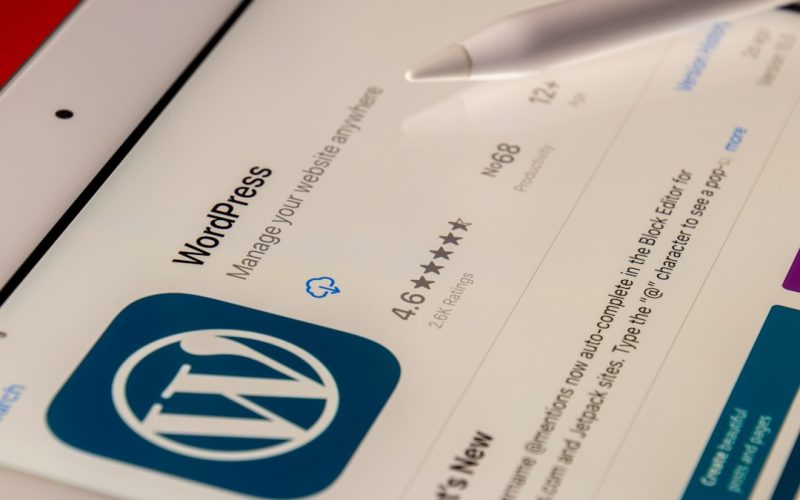Migrating my WordPress site is a significant step that I must take seriously. The importance of this process cannot be overstated, as it can directly impact my website’s performance, security, and overall user experience. Whether I am moving to a new hosting provider for better speed and reliability or simply seeking to upgrade my current setup, understanding the reasons behind the migration is crucial.
A well-executed migration can lead to improved loading times, enhanced security features, and access to better customer support, all of which contribute to a more robust online presence. Moreover, I recognize that the digital landscape is constantly evolving. As my website grows, so do my needs.
I may require more storage space, increased bandwidth, or advanced features that my current hosting provider cannot offer. By migrating my WordPress site, I am not just making a change; I am investing in the future of my online endeavors. This process allows me to take control of my website’s destiny, ensuring that it remains competitive and capable of meeting the demands of my audience.
Table of Contents
ToggleKey Takeaways
- Migrating your WordPress site is important for improving performance and security, as well as gaining access to new features and capabilities.
- Choosing the right hosting provider is crucial for ensuring that your new WordPress site runs smoothly and efficiently.
- Backing up your current WordPress site is essential to prevent data loss during the migration process.
- Setting up your new WordPress site on the new hosting provider requires careful attention to detail to ensure a seamless transition.
- Testing your new WordPress site is necessary to identify and address any issues before finalizing the migration process.
Choosing the Right Hosting Provider for Your New WordPress Site
Selecting the right hosting provider is one of the most critical decisions I will make during this migration process. With countless options available, I need to carefully evaluate each provider’s offerings to find one that aligns with my specific needs. Factors such as uptime reliability, customer support, scalability, and pricing are all essential considerations.
I want a hosting provider that not only meets my current requirements but also has the potential to grow with me as my website evolves. In addition to these practical aspects, I also pay attention to the reputation of the hosting provider within the WordPress community. Reading reviews and seeking recommendations from fellow website owners can provide valuable insights into the experiences others have had.
I want to ensure that the provider I choose has a track record of excellent service and support, as this will be crucial if I encounter any issues during or after the migration process. Ultimately, finding the right hosting provider will set the foundation for a successful transition and a thriving online presence.
Backing Up Your Current WordPress Site

Before embarking on the migration journey, I must prioritize backing up my current WordPress site. This step is non-negotiable; it serves as a safety net that protects my valuable content and data from potential loss during the migration process. I take the time to create a comprehensive backup that includes not only my posts and pages but also media files, themes, and plugins.
Utilizing reliable backup plugins or tools ensures that I have a complete snapshot of my site that I can restore if anything goes awry. In addition to creating a backup, I also make sure to store it in multiple locations. While saving it on my local computer is essential, I also consider cloud storage options for added security.
This redundancy gives me peace of mind, knowing that even if one backup fails or becomes corrupted, I have other copies available. By taking these precautions, I am setting myself up for a smoother migration experience and minimizing the risk of losing any critical data.
Setting Up My New WordPress Site on the New Hosting Provider
| Task | Status |
|---|---|
| Domain Transfer | Completed |
| WordPress Installation | Completed |
| Theme Setup | In Progress |
| Plugin Installation | Not Started |
| Content Migration | Not Started |
Once I have chosen a new hosting provider and backed up my current site, it’s time to set up my new WordPress site. This process typically begins with installing WordPress on the new server, which many hosting providers offer as a one-click installation option. This feature simplifies the setup process significantly and allows me to focus on customizing my site rather than dealing with technical complexities.
After installing WordPress, I take the time to configure essential settings such as permalinks, user roles, and general site information. This initial setup phase is crucial because it lays the groundwork for how my site will function moving forward. Additionally, I begin selecting and installing themes and plugins that align with my vision for the new site.
By carefully curating these elements from the start, I can ensure that my new WordPress site reflects my brand identity and meets my audience’s needs.
Exporting My Content from the Old WordPress Site
With my new WordPress site set up and ready to go, the next step is exporting my content from the old site. WordPress provides built-in tools that make this process relatively straightforward. By navigating to the “Tools” section in my dashboard and selecting “Export,” I can choose to export all content or specific types of content such as posts, pages, or media files.
This flexibility allows me to tailor the export process according to my needs. As I initiate the export process, I pay close attention to any potential issues that may arise. For instance, if I have a large amount of content or media files, it may take some time for the export file to generate.
Patience is key during this stage; rushing through could lead to incomplete exports or errors that complicate the migration process later on. Once the export file is ready, I download it and keep it safe for the next phase of migration.
Importing My Content to the New WordPress Site

Now comes one of the most exciting parts of the migration process: importing my content into the new WordPress site. After logging into my new site’s dashboard, I navigate to “Tools” and select “Import.” Here, I find various options for importing content from different platforms; however, since I’m migrating from one WordPress site to another, I choose the WordPress importer tool. Upon selecting this option, I’m prompted to upload the export file I previously downloaded from my old site.
As I proceed with this step, I am reminded of how important it is to ensure that all content is imported correctly. The importer allows me to assign authors and import attachments, which is crucial for maintaining continuity in my site’s structure and user experience. Once everything is set in motion, I sit back and wait for the import process to complete—an exhilarating moment as I watch my content come to life on its new home.
Updating My Domain Name and DNS Settings
With all my content successfully imported into the new WordPress site, it’s time to update my domain name and DNS settings. This step is vital because it ensures that visitors can access my new site using its familiar web address. First, I log into my domain registrar account and locate the DNS settings for my domain name.
Here, I will need to update the nameservers or A records to point to my new hosting provider’s server. As I make these changes, I am mindful of potential downtime during this transition period. DNS changes can take some time to propagate across the internet—anywhere from a few minutes to 48 hours—so patience is essential.
During this time, some visitors may still be directed to my old site while others may reach the new one. To mitigate confusion for users who may encounter either version of my site during this transition period, I consider adding a temporary notice on both sites informing them of the migration.
Testing My New WordPress Site
Once I’ve updated my domain name and DNS settings, it’s crucial for me to thoroughly test my new WordPress site before fully launching it. This testing phase allows me to identify any issues or discrepancies that may have arisen during the migration process.
First and foremost, I check all pages and posts to ensure they display correctly and that all links are functional.
Broken links or missing images can significantly detract from user experience and negatively impact SEO. In addition to checking content integrity, I also test various functionalities such as forms, e-commerce features (if applicable), and any interactive elements on my site. Ensuring that everything works seamlessly is essential for providing visitors with a positive experience when they arrive at my new site.
If any issues arise during testing, I take note of them so that I can address them promptly before officially launching.
Redirecting Traffic from the Old Site to the New Site
To ensure a smooth transition for visitors who may still be trying to access my old site, implementing redirects is an essential step in the migration process. By setting up 301 redirects from old URLs to their corresponding new URLs on my new site, I can guide users seamlessly without losing traffic or search engine rankings. This step not only helps maintain user experience but also preserves any SEO value associated with my old site’s pages.
I typically use plugins designed for managing redirects or configure them directly through my hosting provider’s control panel if they offer such functionality. As I set up these redirects, I double-check each URL mapping to ensure accuracy—any mistakes could lead users to dead ends or incorrect pages on my new site. Once everything is in place, I’m relieved knowing that visitors will be directed appropriately as they navigate between both sites.
Troubleshooting Common Issues During the Migration Process
Despite careful planning and execution, it’s not uncommon for issues to arise during a WordPress migration process.
Being prepared for potential challenges can save me time and frustration down the line.
Some common issues include broken links after importing content or missing images due to incorrect file paths in the database.
If I encounter these problems, it’s essential for me to remain calm and methodical in troubleshooting. One effective approach is utilizing tools like search-and-replace plugins or database management tools such as phpMyAdmin to fix broken links or update file paths in bulk. Additionally, consulting online forums or support communities can provide valuable insights from others who have faced similar challenges during their migrations.
By staying proactive in addressing these issues as they arise, I’m able to keep my migration on track and minimize disruptions.
Finalizing the Migration and Ensuring Everything is Working Properly
As I approach the final stages of migrating my WordPress site, it’s time for me to conduct a thorough review of everything before officially launching it to the public. This finalization phase involves double-checking all settings—ensuring that plugins are functioning correctly, themes are displaying as intended, and all content is intact without any errors or omissions. I also take this opportunity to optimize performance by implementing caching solutions or optimizing images if necessary.
Once I’m satisfied with how everything looks and functions on my new site, I’m ready for launch! However, even after going live, I remain vigilant in monitoring performance metrics and user feedback in case any unforeseen issues arise post-migration. In conclusion, migrating a WordPress site is an intricate yet rewarding process that requires careful planning and execution at every stage.
By understanding its importance and following each step diligently—from choosing a hosting provider to finalizing everything—I can ensure a successful transition that enhances both performance and user experience on my new platform.
If you are looking to migrate your WordPress site to a new host, you may also be interested in learning how to create a movie WordPress website. This article provides valuable tips and insights on how to design a website specifically for showcasing movies. Additionally, if you are a freelancer looking to attract SEO clients, you can check out this guide for helpful strategies. And if you are a developer working with the Flatsome theme, you can find useful resources and tutorials in this article.
FAQs
What is WordPress migration?
WordPress migration is the process of moving a WordPress website from one hosting provider to another. This may involve transferring all website files, databases, and settings to the new hosting environment.
Why would I need to migrate my WordPress site to a new host?
There are several reasons why you might need to migrate your WordPress site to a new host, including better performance, improved customer support, lower costs, or the need for additional features and resources.
What are the steps involved in migrating a WordPress site to a new host?
The steps involved in migrating a WordPress site to a new host include backing up your website, setting up a new hosting account, transferring your website files, migrating your database, updating your DNS settings, and testing your website on the new host before making it live.
Can I migrate my WordPress site to a new host without any downtime?
Yes, it is possible to migrate your WordPress site to a new host without any downtime by using a temporary URL to test your website on the new host before updating your DNS settings.
Are there any risks involved in migrating a WordPress site to a new host?
There are potential risks involved in migrating a WordPress site to a new host, such as data loss, website downtime, and potential impact on search engine rankings. It is important to follow a thorough migration process to minimize these risks.
Do I need any technical knowledge to migrate my WordPress site to a new host?
While it is possible to migrate a WordPress site to a new host without technical knowledge, it is recommended to have a basic understanding of website hosting, FTP, and database management to ensure a smooth migration process.




